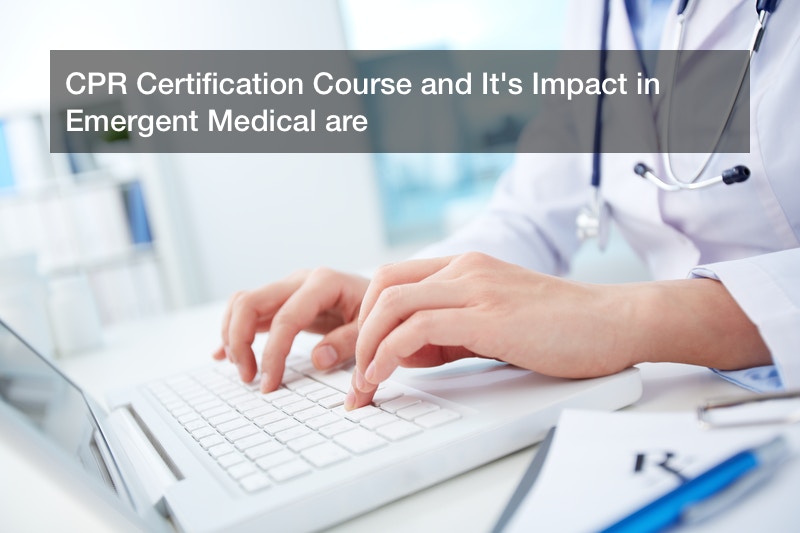
Cardiopulmonary resuscitation is an effective first aid procedure administered on unresponsive people who’ve stopped breathing.
CPR aids in maintaining vital flow of blood to the brain and heart. It also helps in increasing the duration of electric shock provided via a defibrillator, thereby, making the process more effective. Normally CPR rescue would involve mouth-to-mouth resuscitation but when the mouth has sustained major injuries or can’t open, mouth to nose resuscitation can also be applied.
CPR is a Life-Saving Procedure
CPR is especially significant in dangerous circumstances, for example, heart failure, suffocation or suffocating. In case of a mishap and a spectator doesn’t do mouth to mouth, the endurance odds of a casualty will diminish 7% in each and every moment of postponement. Quick activity is thus important. Preferably, this procedure works by applying pressure on the heart through delicate chest pressure to reestablishes blood course to the cerebrum, permitting a casualty to gradually recapture cognizance.
Thinking of Enrolling for CPR Certification?
CPR accreditation is one of the components in a fundamental life bolster class intended to prepare social insurance experts, and most open security laborers with indispensable medical aid preparing to deal with dangerous health related crises.
While the vast majority frequently see CPR preparing just from the conventional edge of mouth-to-mouth revival, this is not, at this point a standard CPR practice rather, the course includes exhaustive emergency treatment preparing. A run of the mill CPR class will take in any event an hour to finish.
On the off chance that you are thinking about to enlist for CPR accreditation, here are a couple of things you have to know to settle on an educated choice.
CPR Classes and the 3 Main Types
As referenced before, CPR is one of the fundamental life bolster preparing the others being automated outer defibrillator (AED) and emergency treatment preparing. CPR is a short course and it’s regularly intended for a particular crowd; paramedics, for example, would get distinctive preparation to a person who’s simply inspired by CPR accreditation preparing.
Adult CPR Courses
This is the most fundamental type of CPR which takes not exactly an hour to finish. It just highlights the essential consideration strategies for adolescents and seniors, obviously appropriate for word related territories or home. Seniors are progressively powerless against different health related crises including stroke, suffocation, and heart failures.
On the off chance that you happen to live with your senior people, learning CPR preparing would truly prove to be useful should a crisis happen. Working an automated outer defibrillator (AED) is additionally useful on the grounds that it’s a machine intended to supplement CPR methodology. You can have it remembered for the course however you’ll presumably pay extra as well.
Pediatric CPR Training and Certification
The most far reaching class of CPR for little youngsters under eight. It’s a perfect course uniquely intended for guardians, sitters, instructors or any individual who manages youngsters routinely. With regards to controlling pediatric CPR, the revival procedures are generally not the same as what you’d apply for grown-ups. For youngsters, the CPR methodology will frequently include appropriate aviation route leeway and delicate chest pressure. Delicate heart compression is encouraged.
Basic Life Support
Essential life bolster training designed uniquely for social insurance suppliers and open wellbeing laborers. This course utilize the AED, ventilation gadgets and the difficulties confronting viable CPR organizations. In case you’re are hoping to investigate alternatives in the clinical field, this class for CPR preparing is a prerequisite.
Choosing Cardiopulmonary Resuscitation Classes
Many institutions offer CPR courses and examples include emergency clinics, network wellbeing focuses, centers and universities, nearby schools, local groups of fire-fighters and famous non-benefit associations, for example, Red Cross and the American Heart Association. Indeed, even with the accessibility of CPR classes, in any case, the classes are probably going to be diverse since there is no course normalization nor a solitary office commanded to credited all certified CPR teachers in many states.
All in all, while numerous establishments are offering CPR preparing, talk with your manager first before trying out a CPR class to know the prescribed organizations. A few bosses won’t acknowledge your affirmation on the off chance that it doesn’t originate from the National Safety Council, or the Red Cross or American Heart Association.

